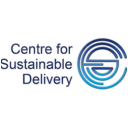This pathway has been developed to aid the assessment, diagnosis and management of common primary headache disorders and give guidance on when to consider secondary headache disorders.
Patients with headache disorders access care across the NHS and this pathway is intended to be relevant to those working across primary care including community pharmacy and general practice and those working across secondary care including emergency care, acute/general medicine and neurology.
It is split into 9 sections to allow easy access:
- Overview: National referral pathway; red, amber and green flag; diagnosis of common primary headaches; life style advice and useful guidelines
- Acute treatment of migraine: relevant to primary and secondary care
- Preventative treatment of migraine: migraine prophylaxis accessed in primary care and specialist options available in secondary care
- Open access CT from primary care, including information on incidental findings
- Management of migraine in pregnancy and lactation: including pre-conception advice
- Management of menstrual and peri-menopausal migraine
- Management of medication overuse headache
- Indomethacin sensitive headaches
- Cluster headache

 Scan the code to visit our website
Scan the code to visit our website